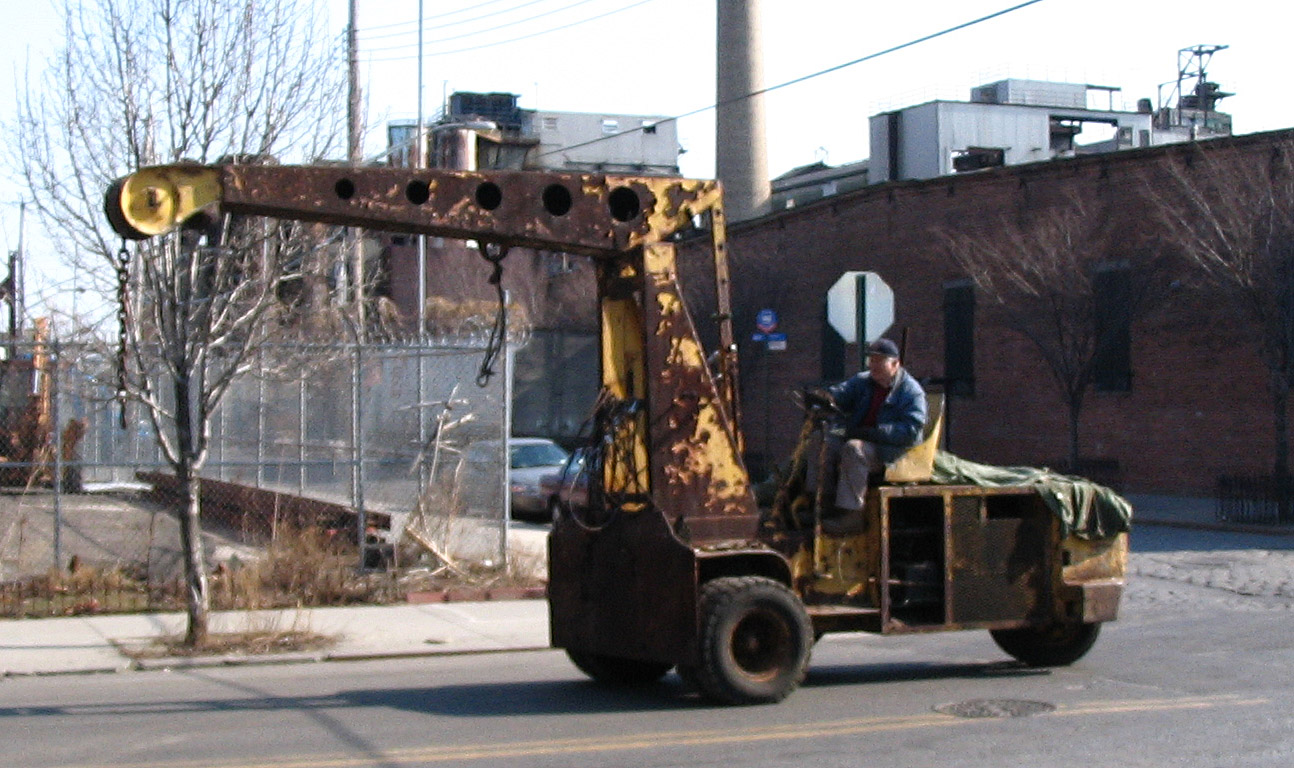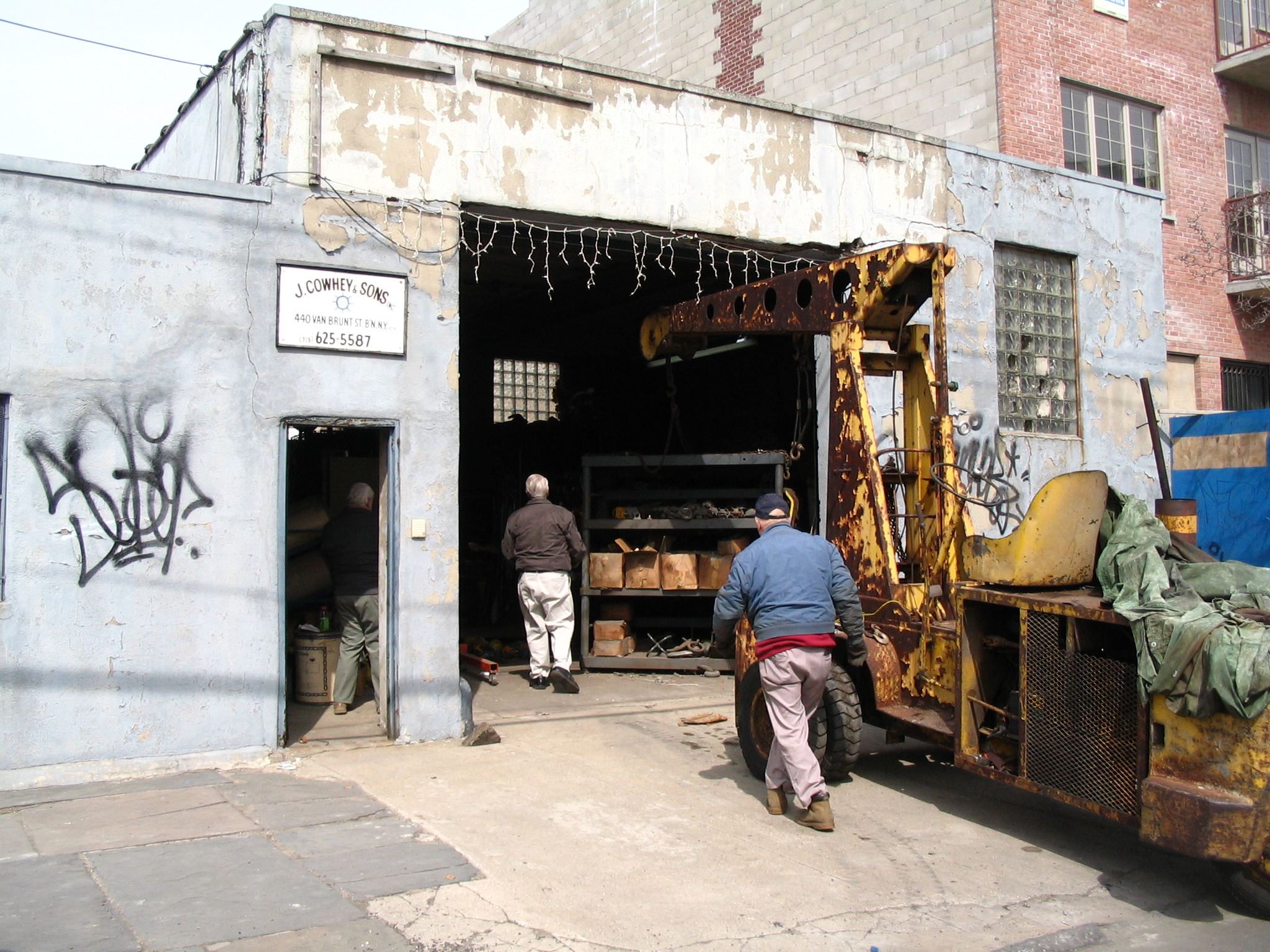PortSide NewYork is honored to have won a White House "Champions of Change" award for our work during and after hurricane Sandy. We hope the award will allow us to continue our Sandy-aid work, launch new resilience training programs, and attract more assistance to Red Hook. Things look promising; the phone has started to ring. Until we finish the blogpost about Part II of our Sandy story, we've added photos to a press release below to tell that story. Part I of the story, how we protected the MARY A. WHALEN from Sandy, can be read here.
PortSide's Story Ashore
PortSide is based on a historic ship, the tanker MARY A. WHALEN, which the organization succeeded in getting listed on the National Register of Historic Places just days before the storm. In the face of Sandy, PortSide’s first responsibility was to protect the MARY from damage, and to prevent her from damaging the property of others. The sad fate of the tanker JOHN B. CADDELL, which went aground during Sandy, is an example of what can happen to an untended ship this size. PortSide assembled a crew of volunteers to prepare the MARY over five days before the surge and to ride out the storm on the vessel.
After assessing the damage to their archive of historic papers and artifacts stored in the shed, the PortSide crew entered Red Hook on Wednesday afternoon to find that the community had not fared as well. PortSide made an immediate decision to drop their own issues, decamp from the ship, and offer to help. The result was the Sandy aid station "351".
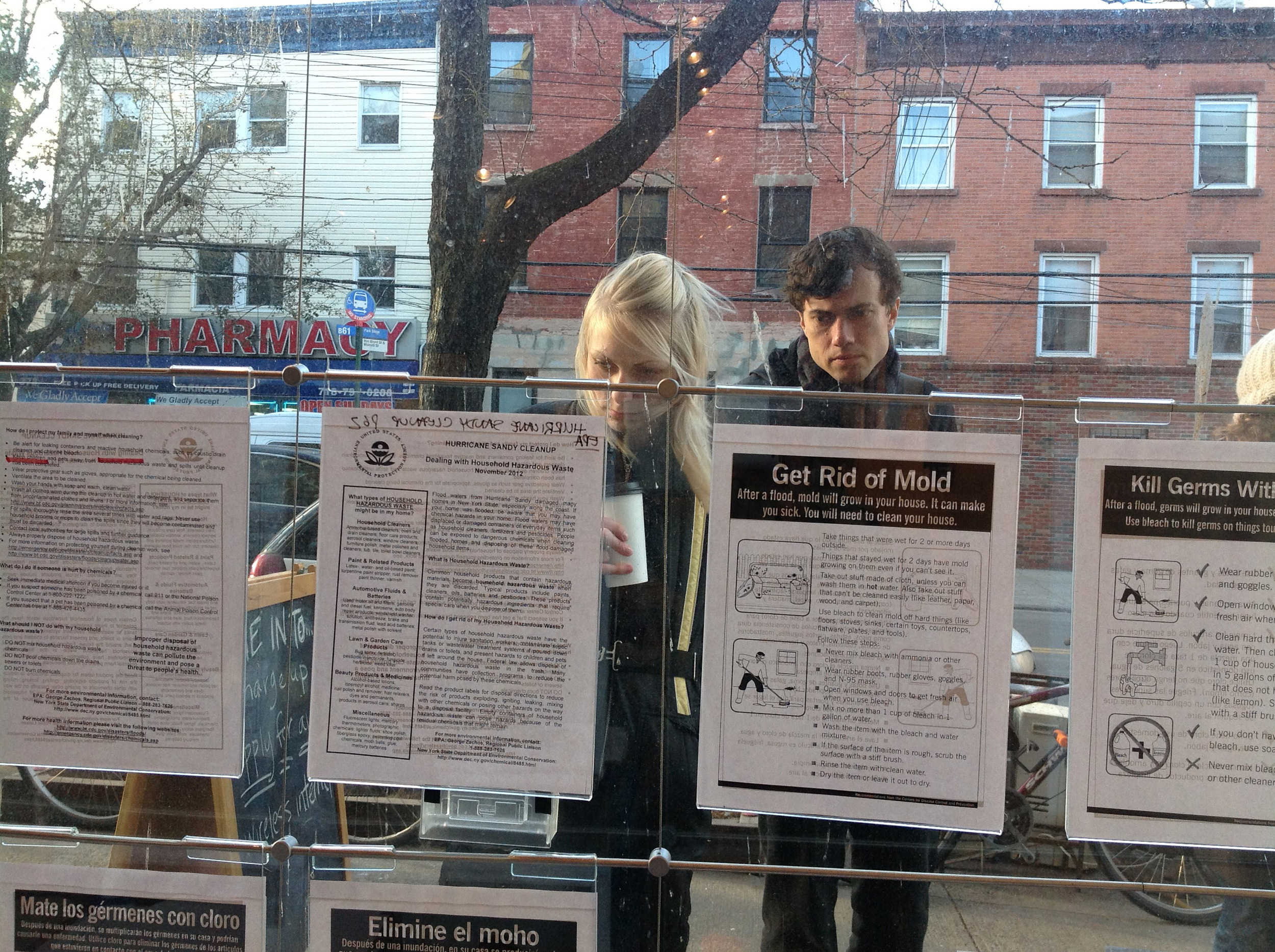
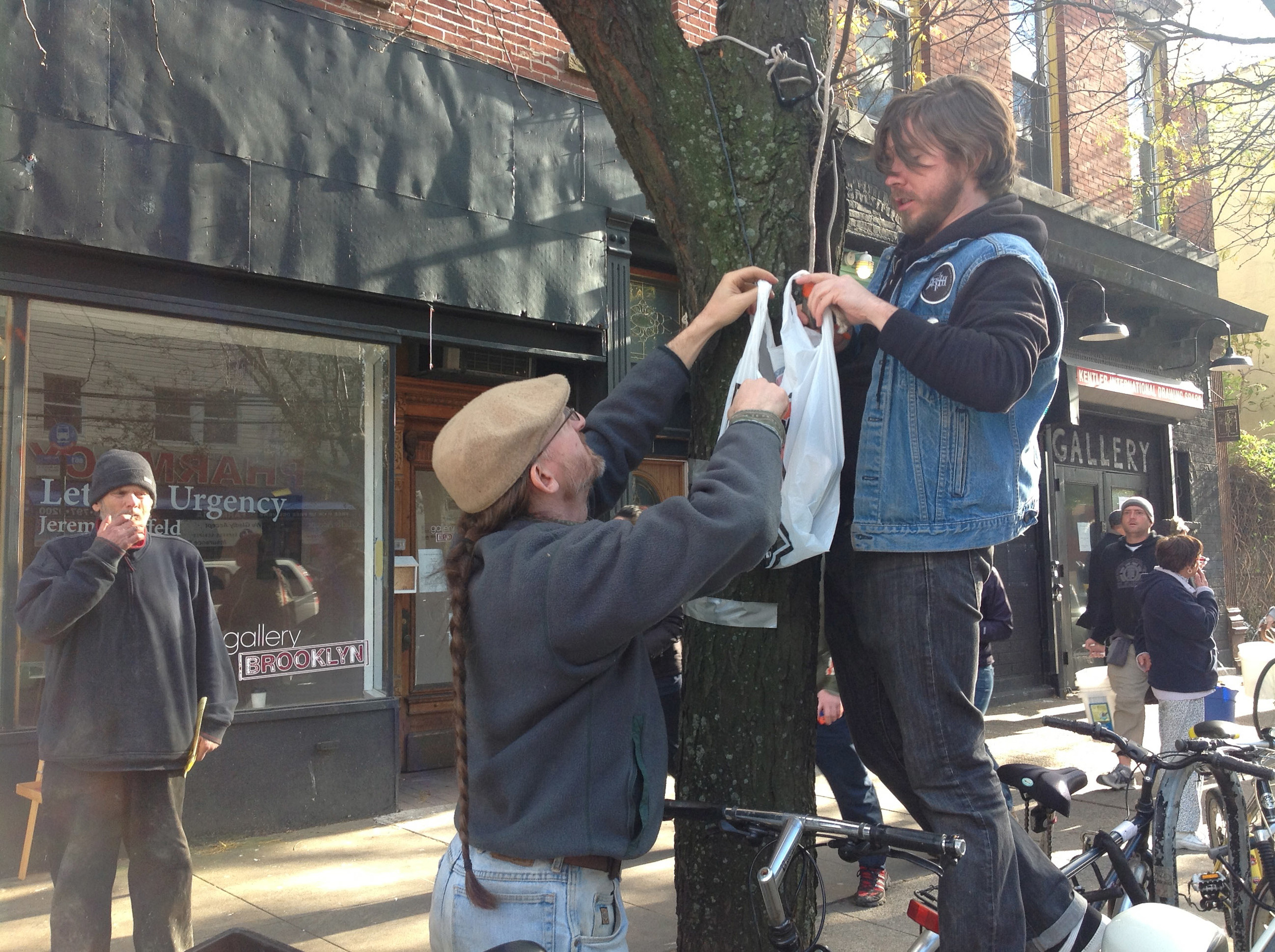
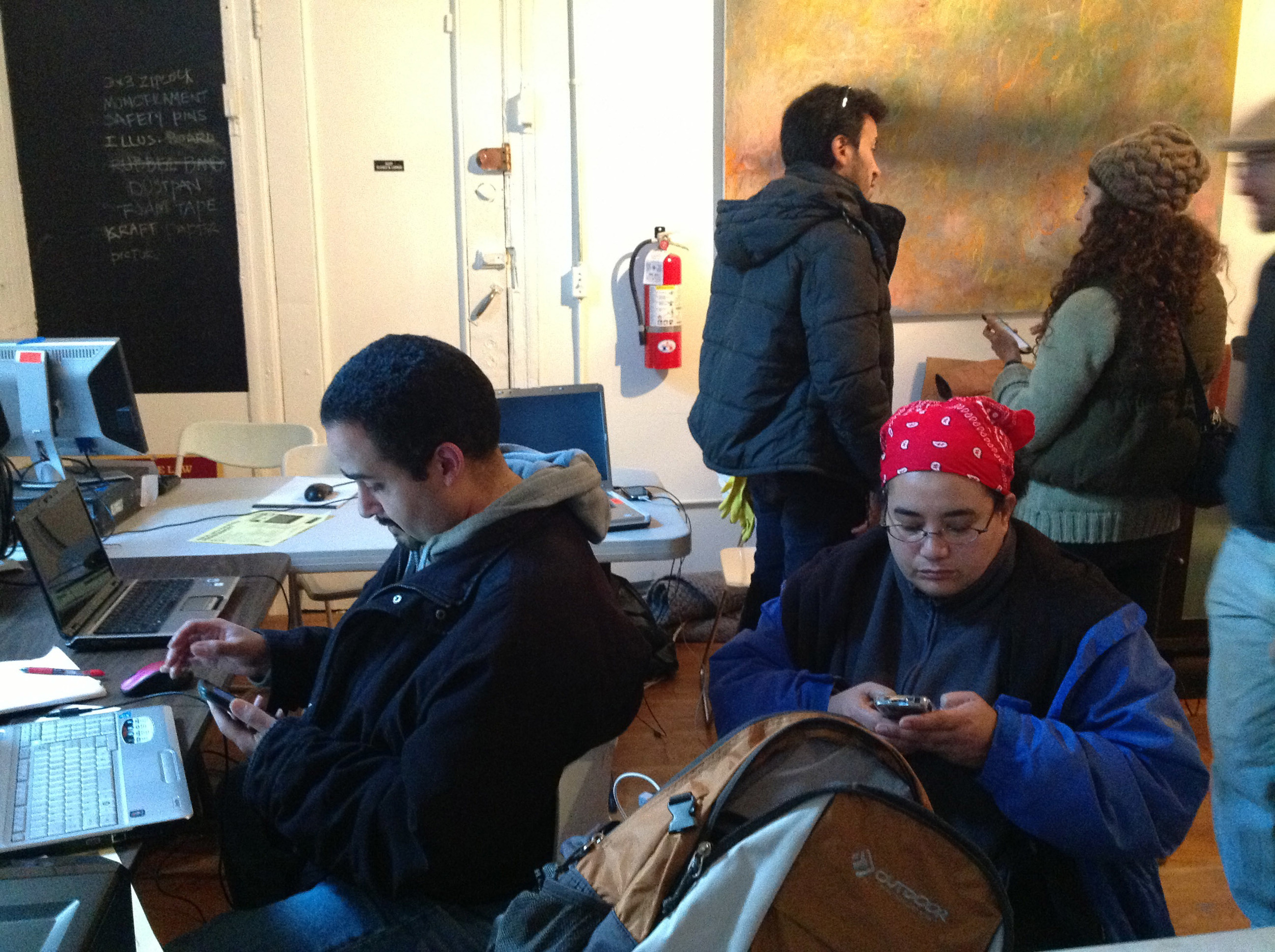

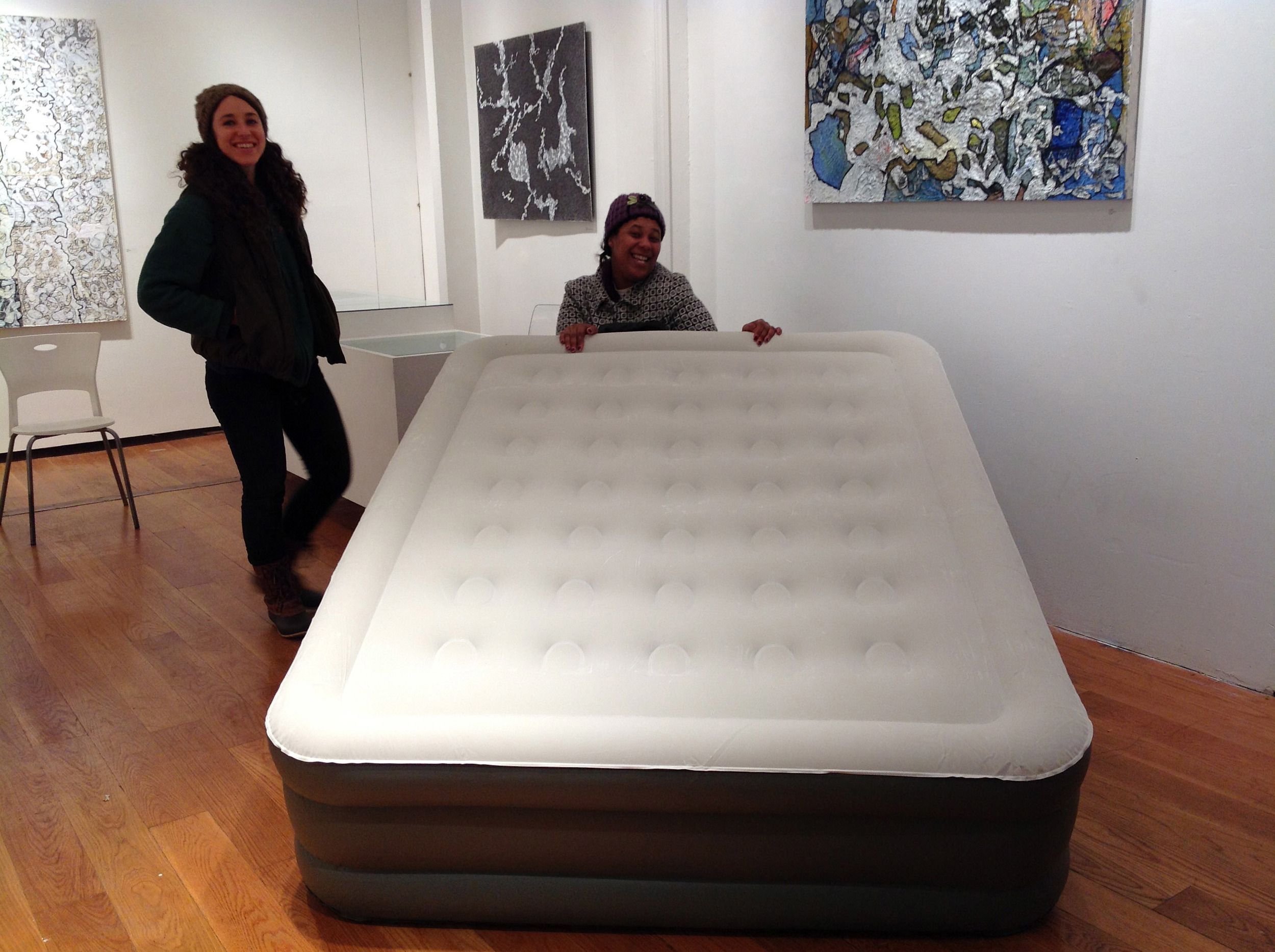
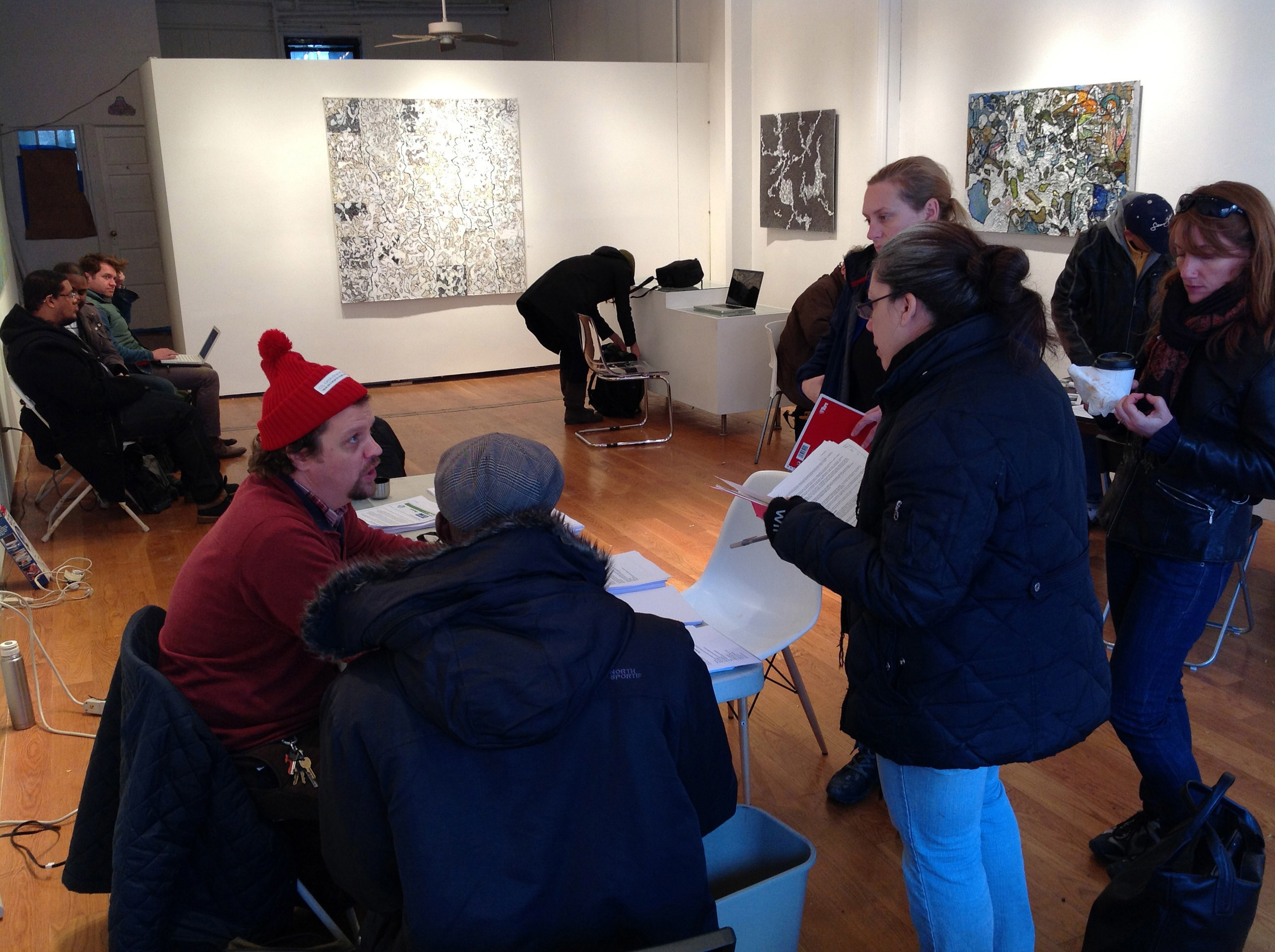
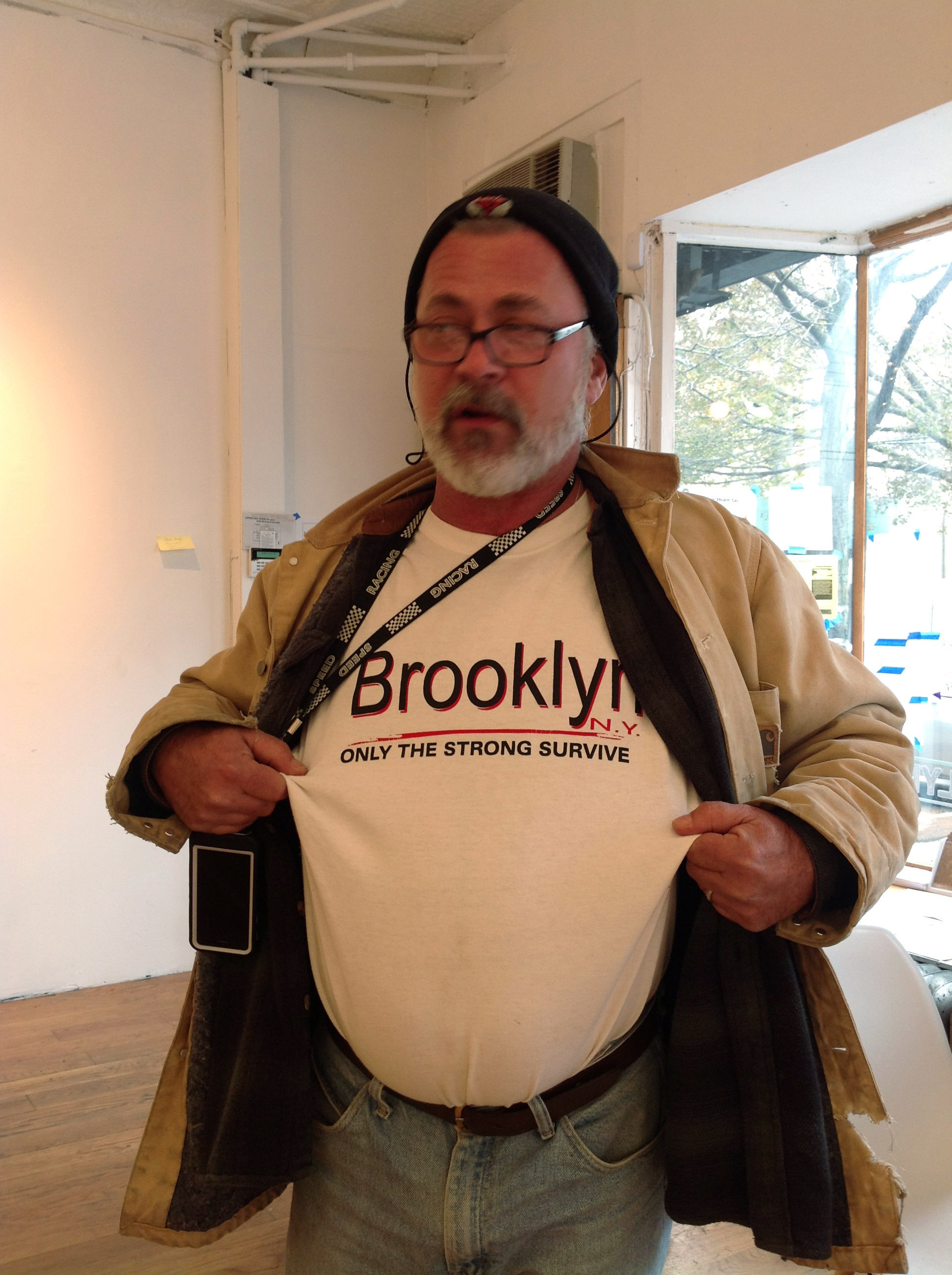
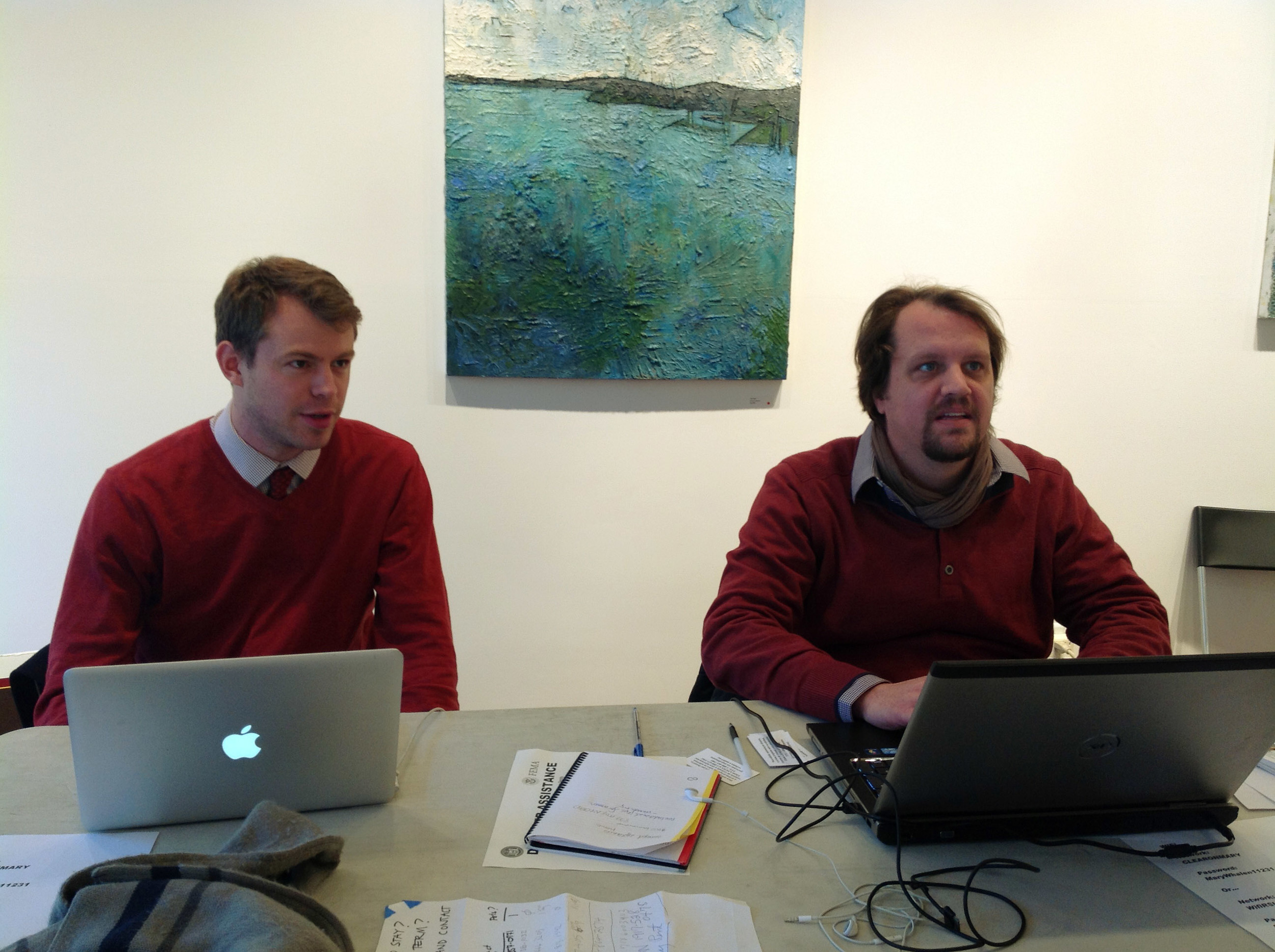


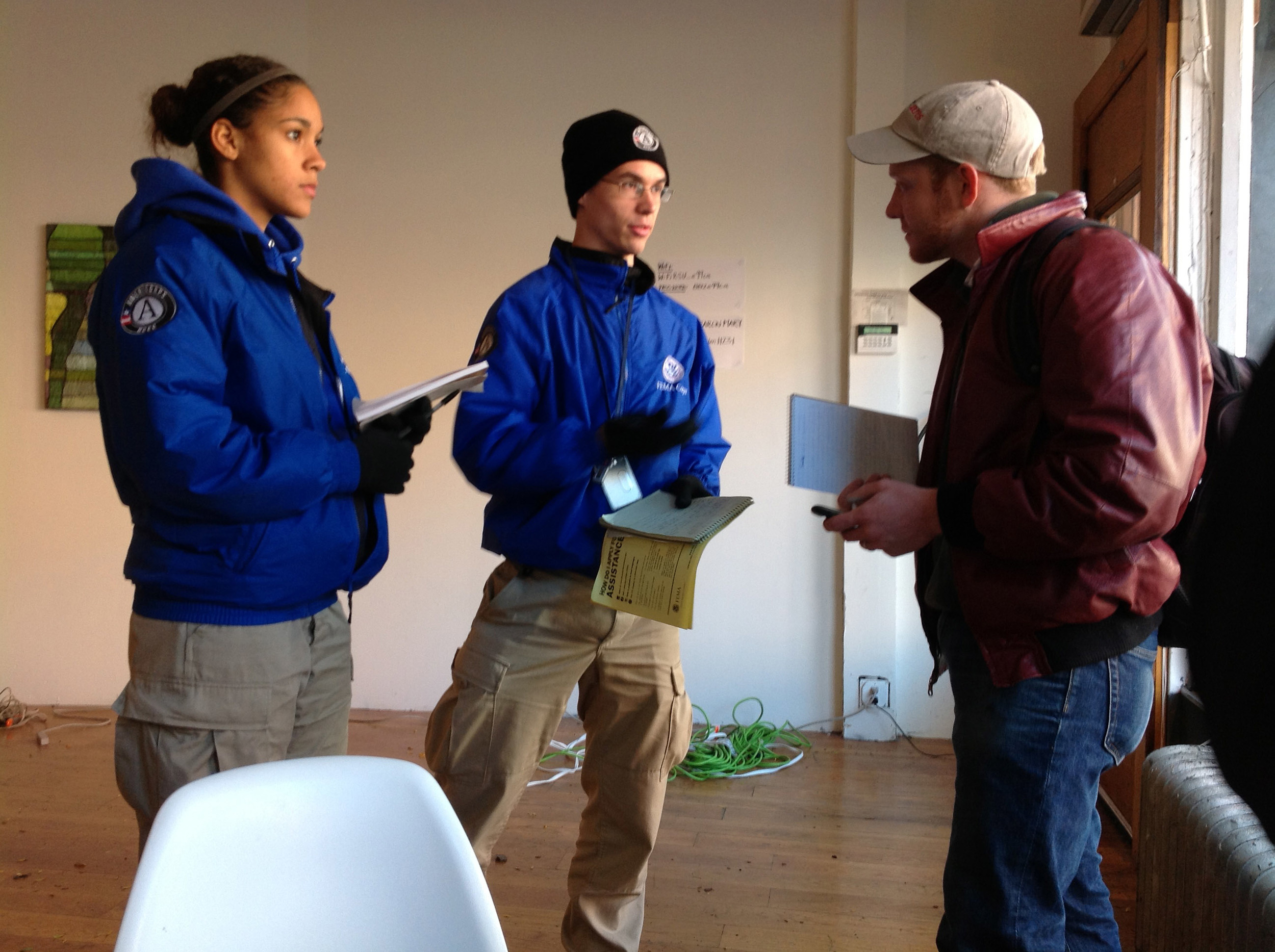
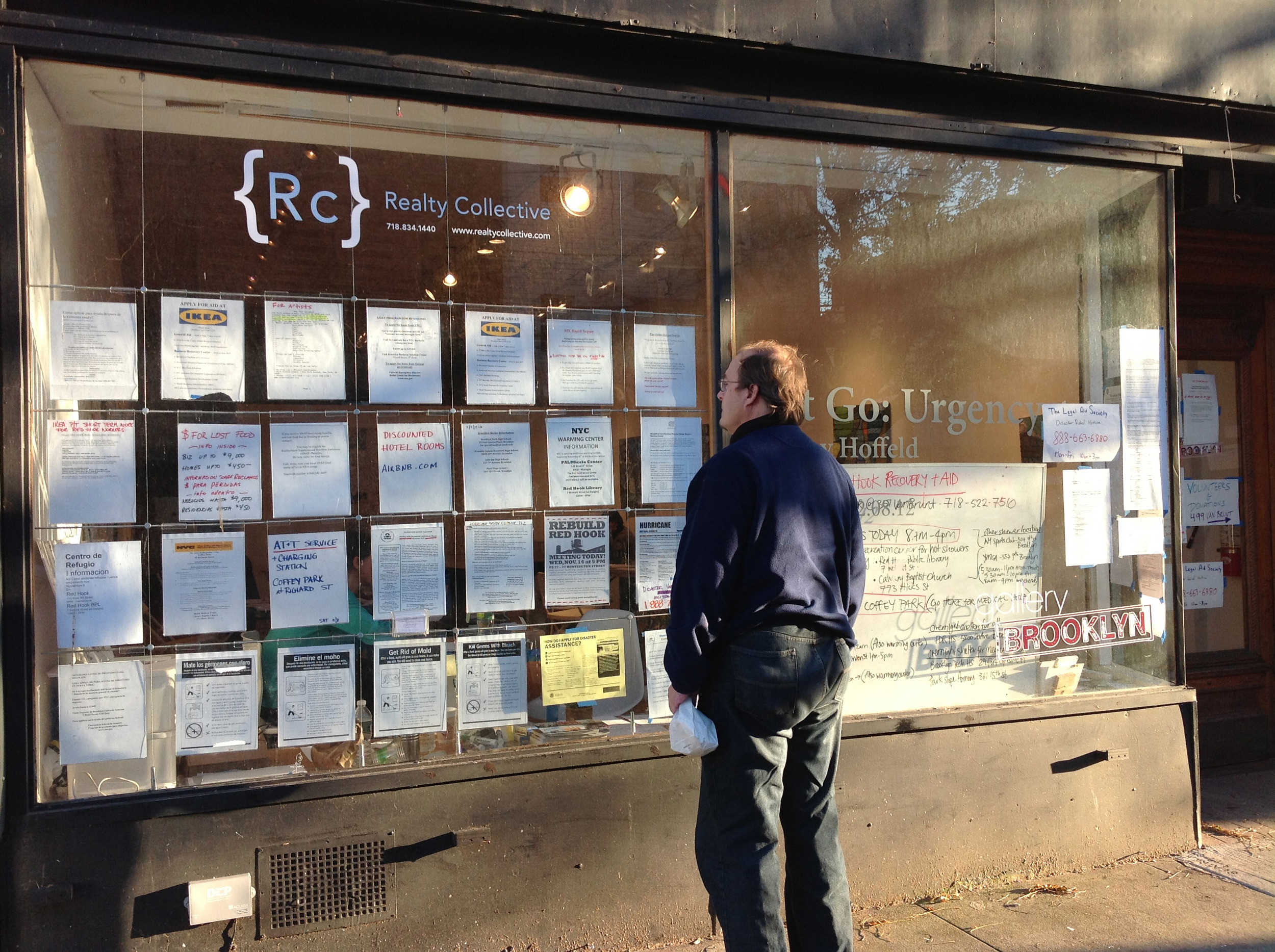
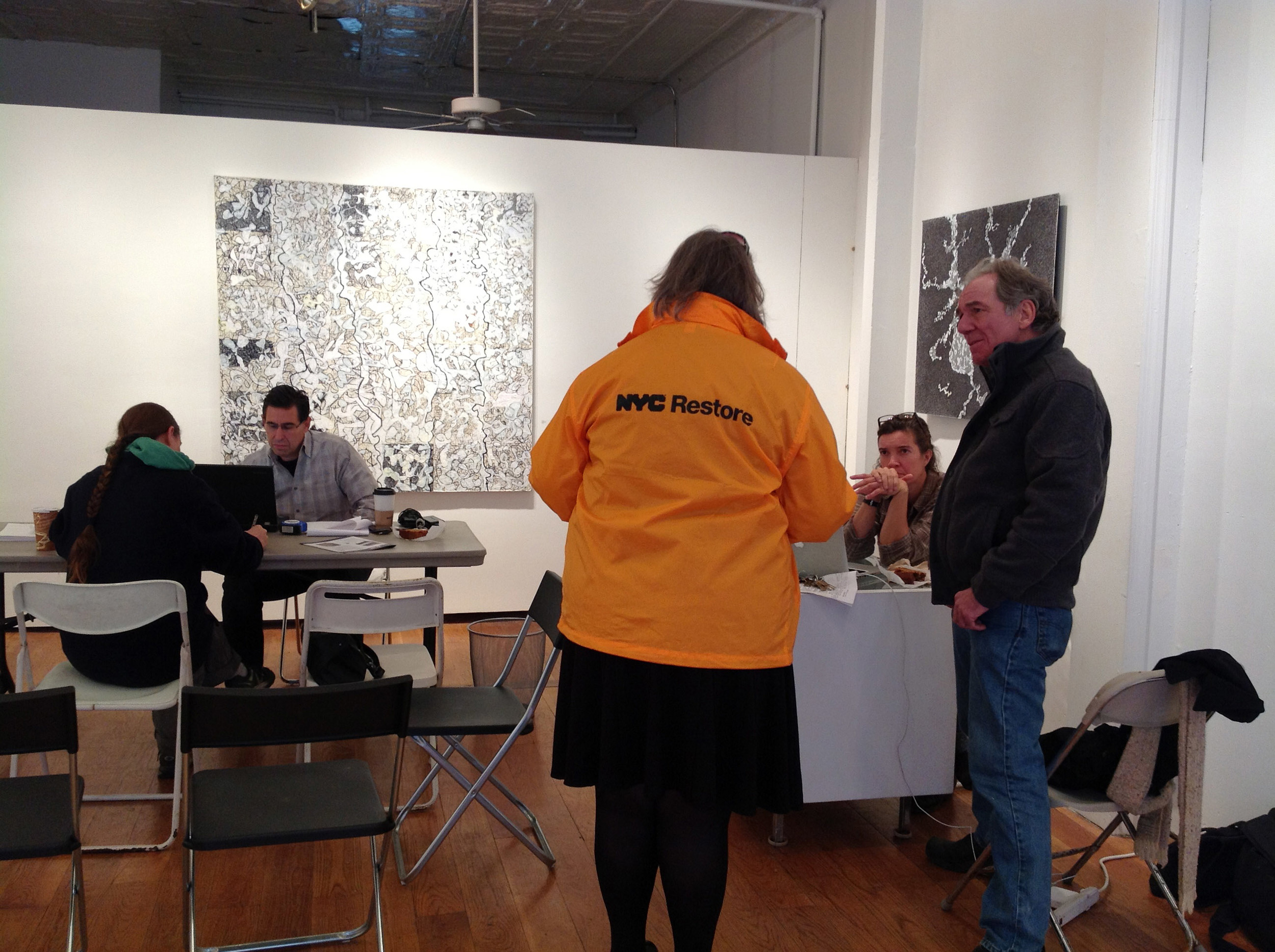
Craig Hammerman, District Manager of Brooklyn, Community Board 6, in his nomination of PortSide for the “Champions For Change” Award, said “PortSide NewYork’s innovative approach was to apply their experience with cultural pop-ups to create an immediate, inventive community-based Sandy aid station that continually changed services in response to needs and opportunities. PortSide deployed a deep knowledge of the community to pull it all off.”
Essential to the PortSide effort was the ability to rapidly identify partners and forge agreements. On Thursday night, PortSide Director Carolina Salguero began assessing what other groups were already doing, and where PortSide could best use its capabilities. Salguero worked with Realty Collective, a community-minded real estate brokerage with offices in the Columbia Waterfront District and Red Hook neighborhoods of Brooklyn. Realty Collective donated a storefront at 351 Van Brunt Street in Red Hook, complete with free electricity, internet and a phone line, despite the fact that their principal Victoria Hagman was herself a Sandy victim whose Red Hook home was flooded.
Over Thursday night, Realty Collective and PortSide secured the co-operation of Gallery Brooklyn, who shares the storefront with the brokerage. The result was an only-in-Red-Hook blend: an aid station run by a maritime organization in a real estate office that was also an art gallery.
PortSide gathered volunteers off the street to get six computer workstations, office furniture and equipment from PortSide’s offices on the tanker to set up at “351”. The internet was down, so PortSide volunteer and museum curator Rothenberg ran a Clear wireless hub up a tree for two days until a PortSide contact at the Port Authority, who had previously worked to establish the cellphone network in the northeast, helped get Red Hook’s Verizon internet and cellphone service reconnected.
“351” became a haven for people -- to escape the cold, to charge cell phones, I-pads, and power tools, to check e-mail to blow up a new air bed, to start the FEMA application or an insurance claim, or to wait for an escort to enter an apartment building whose electronic doors didn’t lock without power. Sandy victims remarked that the gallery environment with bright art on the walls was uplifting. The Director of Gallery Brooklyn, Jenna Weber, was so moved by the scene that she offered to donate 10% of exhibition sales to Red Hook relief.
PortSide’s MO was to respond to initiatives or needs coming from the community, through both action and communication. Emergency information replaced real estate listings in the storefront window. “351” was the first small business recovery center in Red Hook, before IKEA’s aid center opened or the FEMA trailers arrived, and served as a hub for Red Hook residents and business people to learn about aid programs while gaining emotional support and tips from one another. Residents and businesses could use the space to set up their own meetings – one day included overlapping sessions with a restaurant supply vendor and a legal aid clinic with 20 lawyers. Realty Collective invited Katrina-savvy architect Jim Garrison from the Pratt Institute to talk to a packed house about resilient ways to rebuild. PortSide served as a conduit to and from the growing sources of outside aid: elected officials, the Mayor’s office, FEMA, and the Department of Small Business Services.
Residents of Pioneer Street showed extraordinary initiative and cooperation on their one block and brought many ideas down the street to PortSide, who helped manage them and shared them with other Red Hook residents. One example was the coordination of the services of angel electrician Danny Schneider, who arrived from nearby Park Slope in Brooklyn and went on to inspect 60 homes at no charge and to repair many. (He also volunteered in the Rockaways.)
PortSide closed the center in early December. During PortSide’s time ashore, the shorepower connection to the tanker MARY A. WHALEN was knocked out, and PortSide operated for 35 nights with flashlights and one 15 amp extension cord.
Today, PortSide continues providing Sandy relief work via other social media, working with elected officials and on post Sandy initiatives from the Mayor’s office, and by responding to requests from residents and businesses. Plans are being developed for programs that will help Red Hook learn from its own response and develop response plans for future floods. PortSide wants to bring its two constituencies, the world ashore and the world afloat, together. Inland people can be trained in the mariner knowledge base that enabled PortSide to prepare the ship for the storm and which might have prevented a lot of the damage.
PortSide's nominator for the award, the District Manager of Brooklyn Community Board 6 Craig Hammerman wrote “PortSide’s work is an example of the community-based, mutual-aid system that has caused the heavily-damaged neighborhood of Red Hook to become a model for New Yorkers looking for lessons in the Sandy story.”
Statement by Carolina Salguero, Director of PortSide NewYork
All of us here at PortSide NewYork are very honored to receive this White House award and look forward to meeting the other winners so we can learn from their stories. After that, we look forward to growing the post-Sandy flood preparedness programs we would like to offer Red Hook and beyond. We would like to thank the Port Authority of New York and New Jersey for their support during Hurricane Sandy while we were in their Red Hook container port. We offer profuse thanks to our partners at “351”, Realty Collective and Gallery Brooklyn, who opened their doors to Red Hook and made the aid center possible. Victoria Hagman of Realty Collective is really a gem to have given so much at a time when her own home was so destroyed by Sandy. We would like to thank all those volunteers who came in to help, especially the angel electrician Danny Schneider who did work in Red Hook and the Rockaways at no charge. Speaking personally, I was very moved by the collective spirit which sustained Red Hook in those first dark days. Let’s keep that spirit alive; it takes a village, we were all it, and we need to keep that spirit going forward.
Statement by Rep. Nydia M. Velázquez (D-NY):
“PortSide NewYork is to be commended for their work protecting the MARY A. WHALEN and establishing relief services for Red Hook.”
Statement by New York State Senator Velmanette Montgomery
“It gives me great pleasure to give my highest recommendation for consideration as a Champion for Change” to PortSide NewYork.
PortSide NewYork is headquartered on the MARY WHALEN, a decommissioned tanker ship in Red Hook, a coastal community in Brooklyn. PortSide NewYork has been working for years to preserve and communicate the seafaring history of Brooklyn to our schoolchildren and new neighbors. They have embodied community service every day of their existence, but during Superstorm Sandy, they showed exactly how deep commitment to service and community could be.
Thanks to their professional preparations, the MARY WHALEN weathered the storm and the destructive surge in fine shape, but the same could not be said for Red Hook itself. The neighborhood was devastated and lacked electricity and other services for weeks afterward. The staff of PortSide NewYork, led by the indefatigable Carolina Salguero, came ashore and set up a communications hub and aid center in a donated space. They set up meetings between residents and elected officials, engineers, lawyers, electricians...anyone who needed something came to them and PortSide NewYork reached out to find it. I don't know what we would have done without them.”
Statement by Rob Walsh, Commissioner of the NYC Department of Small Business Services
“Immediately after Hurricane Sandy, I was out in impacted neighborhoods like Red Hook speaking to small business owners about their needs and how the City could help. It was incredible to see the individuals, organizations, and business owners who stepped up to help each other out. PortSide New York served as a strong partner, helping us get the word out about the City’s low-interest loans, matching grants, and other assistance available to small business owners impacted by Hurricane Sandy, and I congratulate them for this well deserved award.
Statement by Carlo A. Scissura, President & CEO of the Brooklyn Chamber of Commerce “Red Hook was one of the neighborhoods hardest-hit by Sandy. It’s because of groups like PortSide that we were able to help businesses in the neighborhood,” said Carlo A. Scissura, President & CEO of the Brooklyn Chamber of Commerce. “By housing members of our staff during those critical weeks following the storm, the Brooklyn Chamber of Commerce was able to help business owners fill out essential loan applications and other paperwork in order to get their stores open again. PortSide’s aid center became a critical hub for the community and a place where they could get relief. We could not have done our work in helping local businesses without them.”
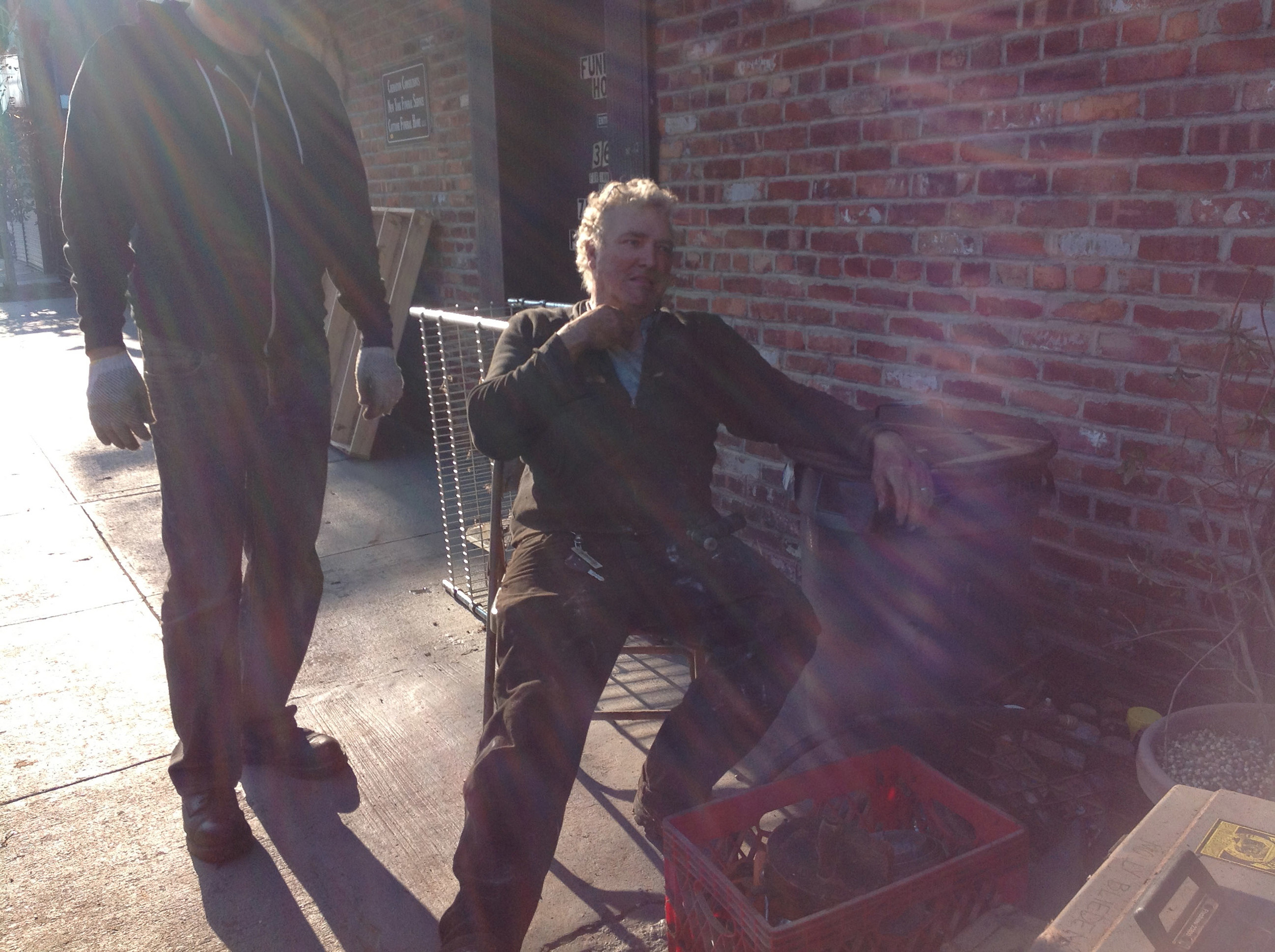
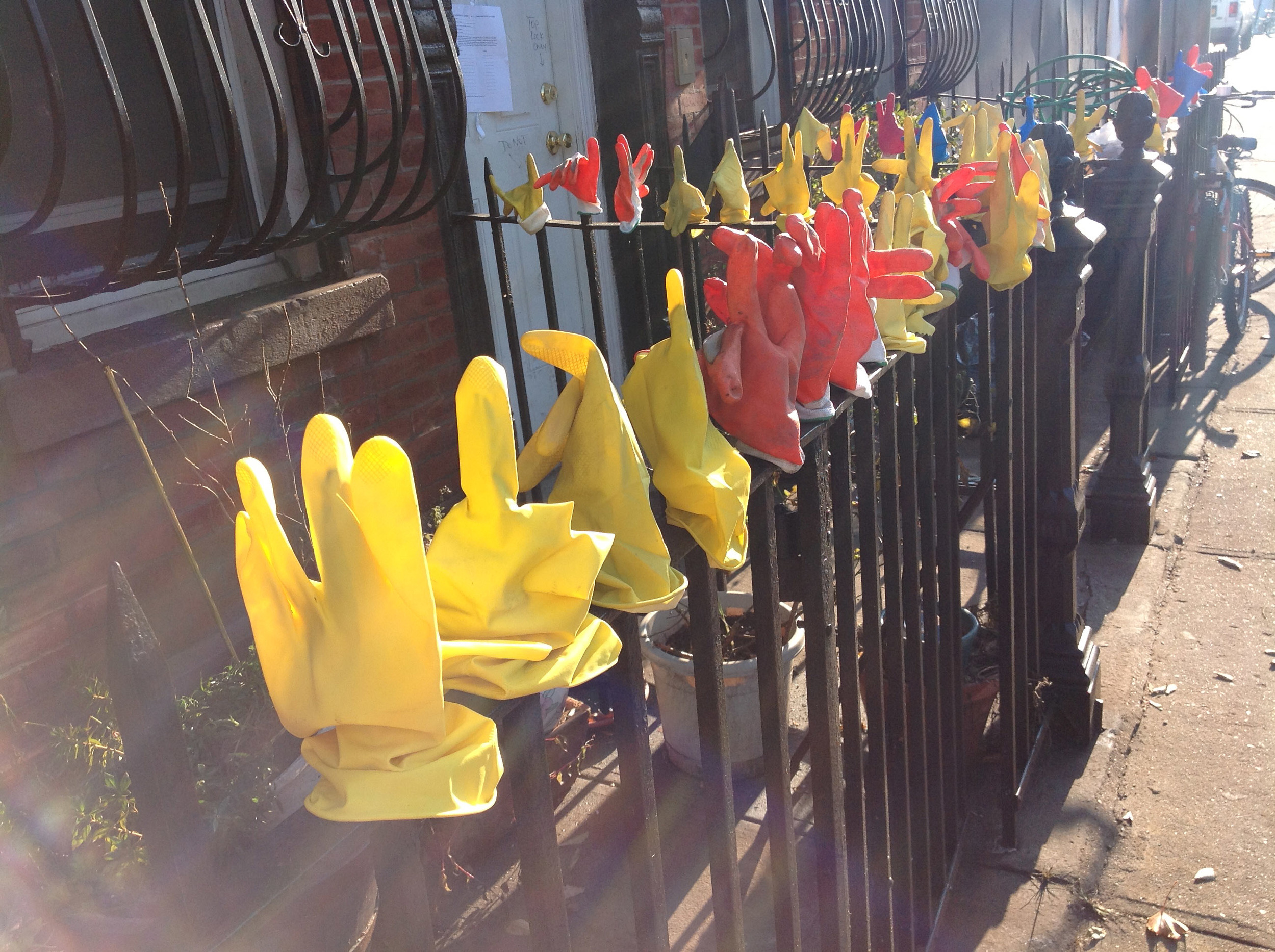
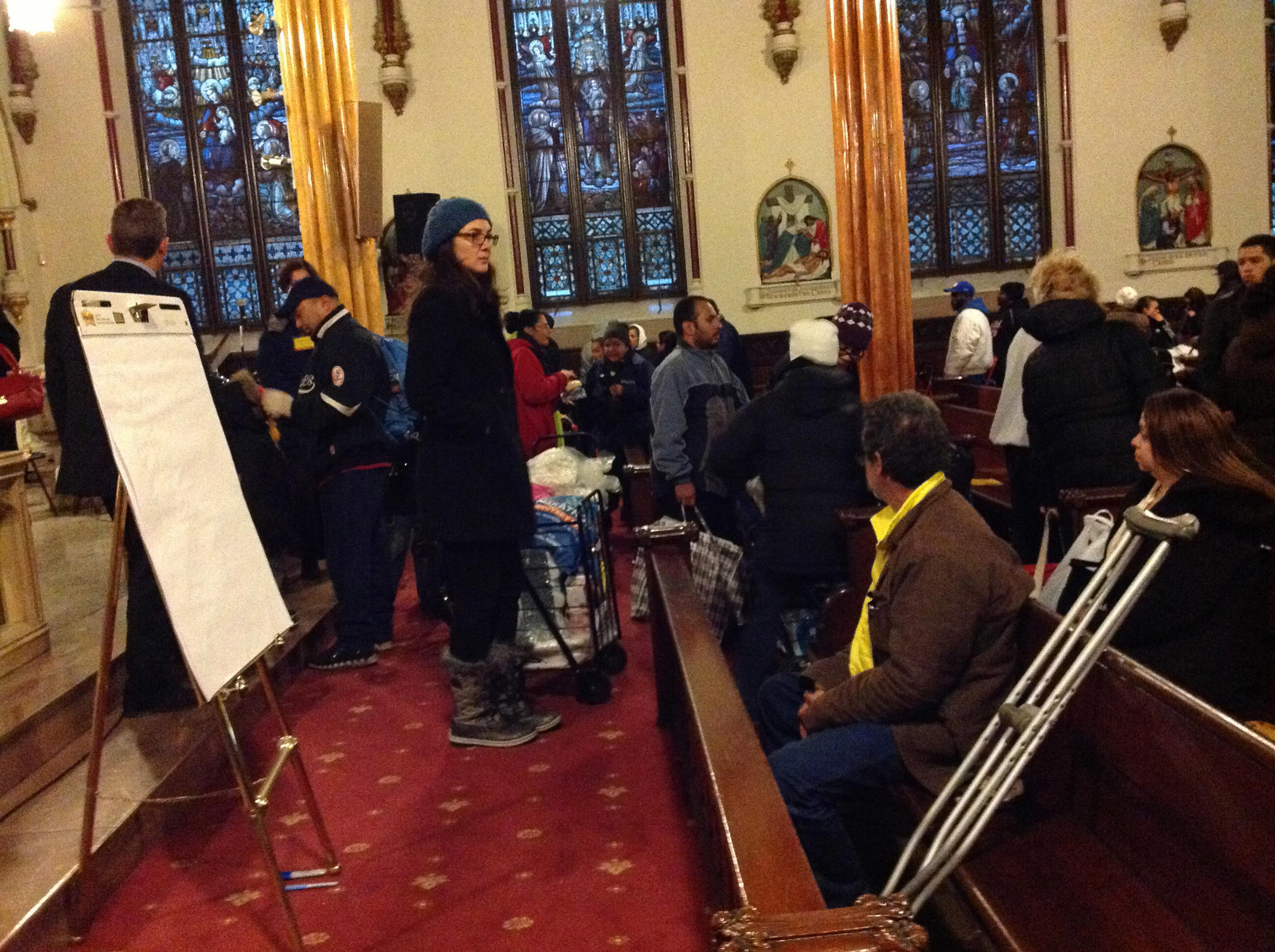
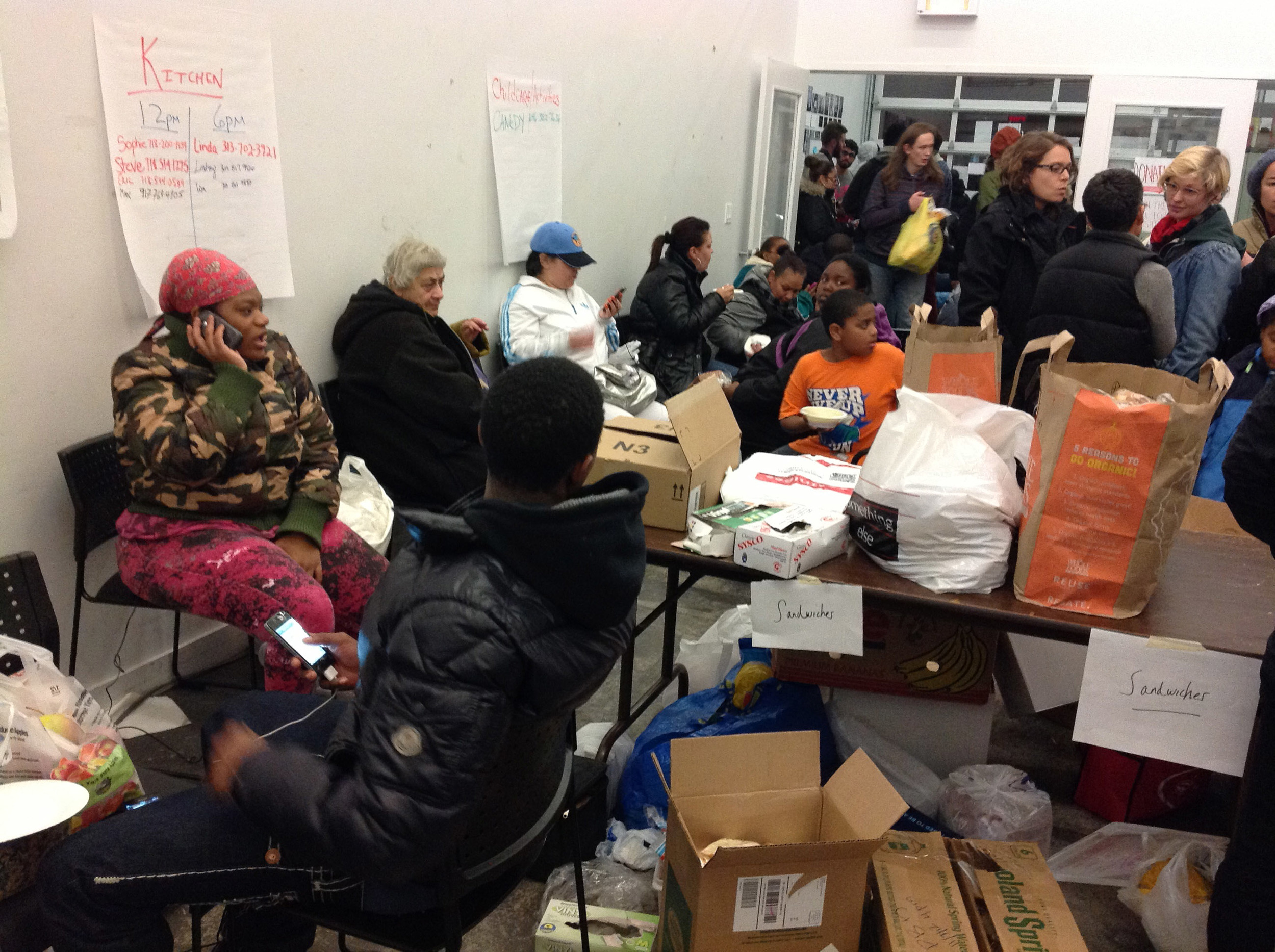

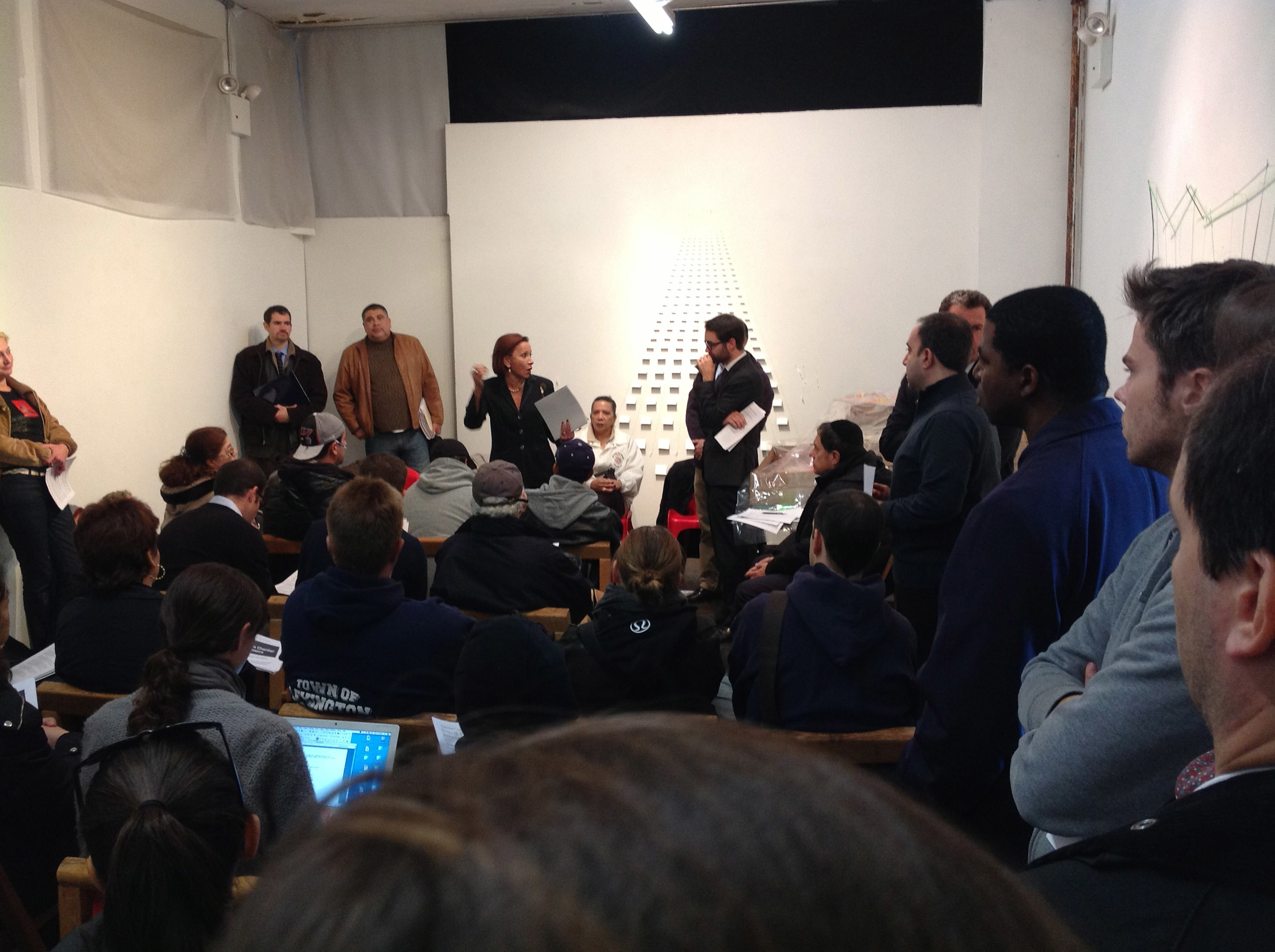
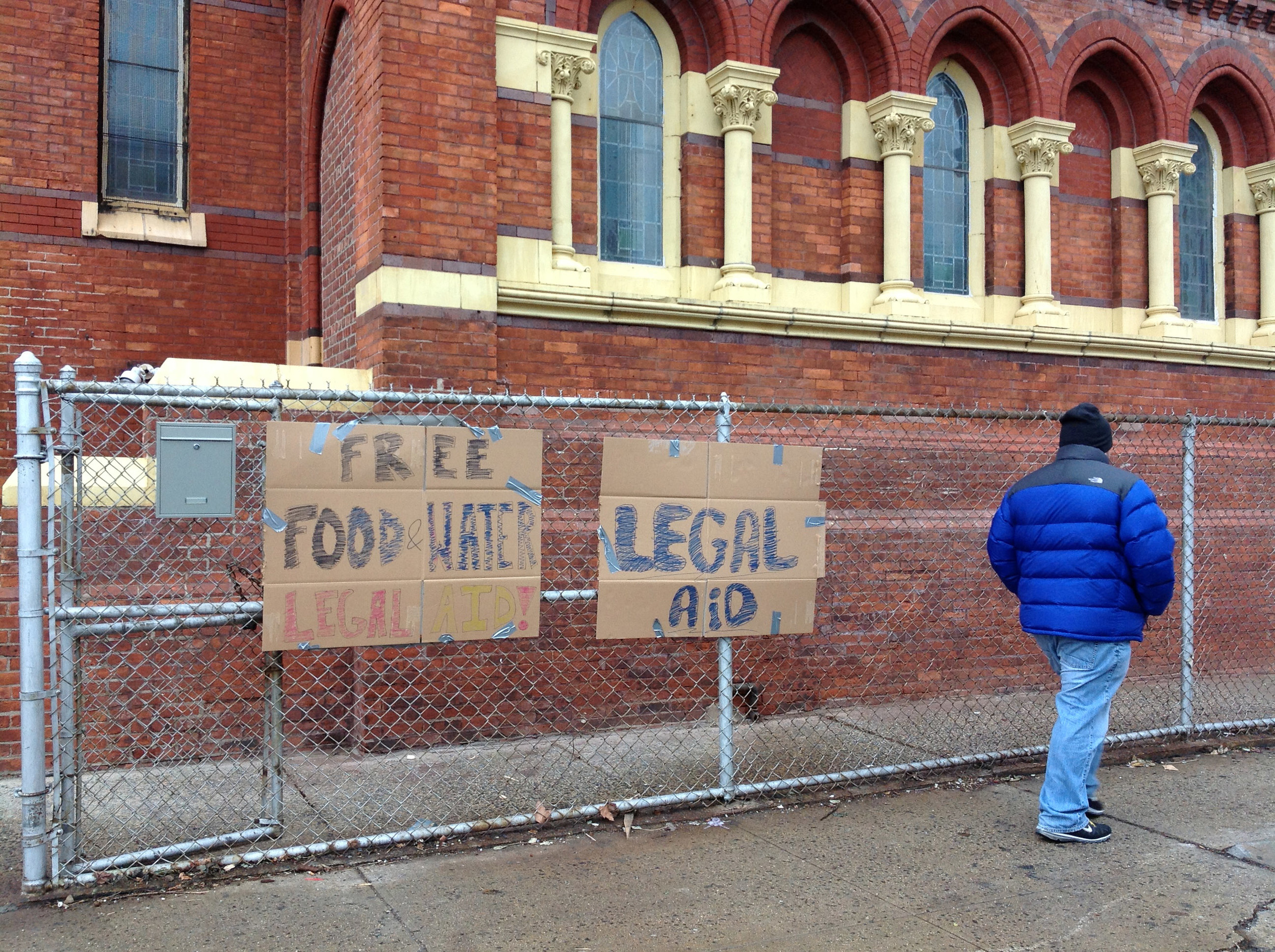
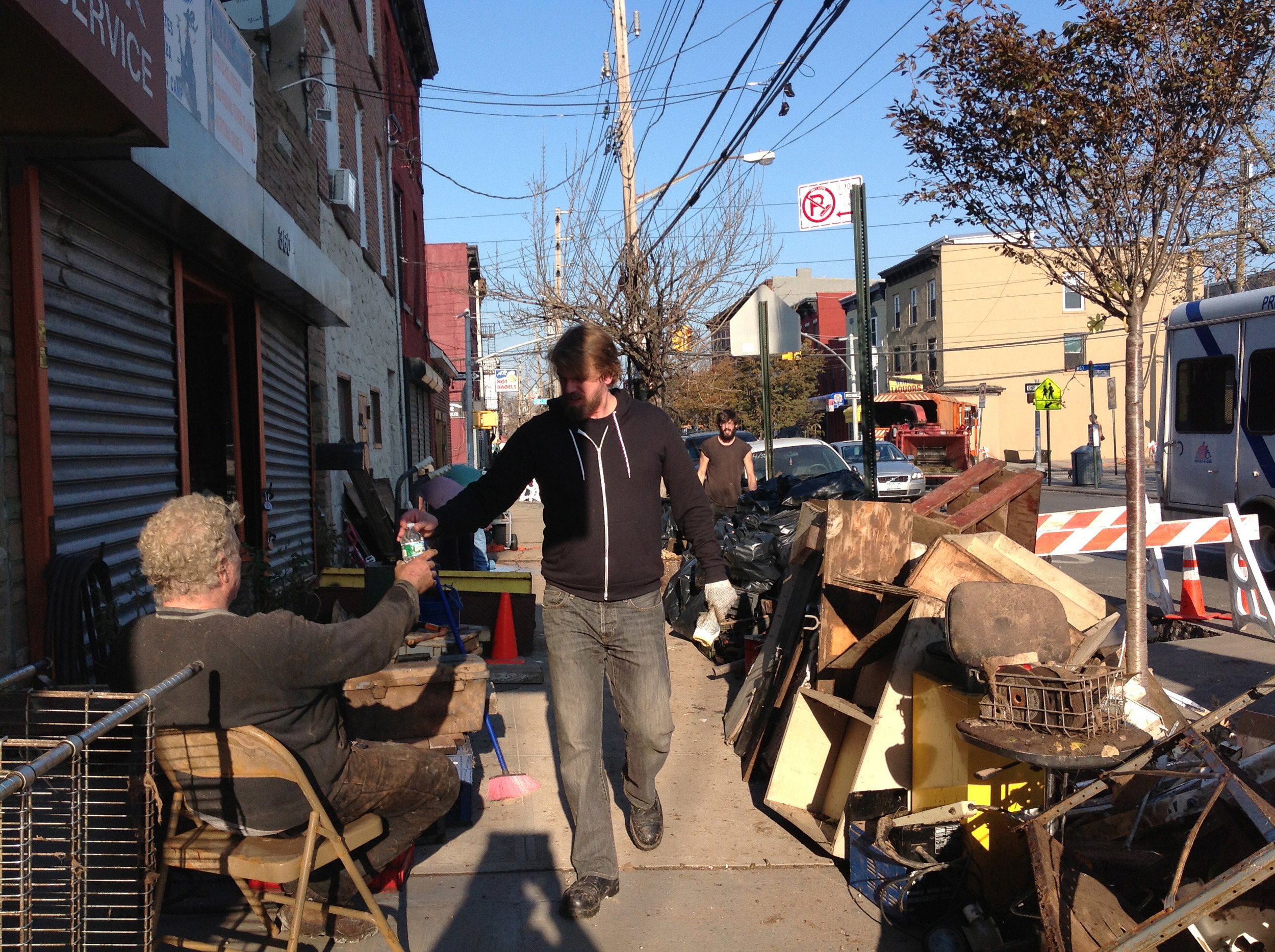
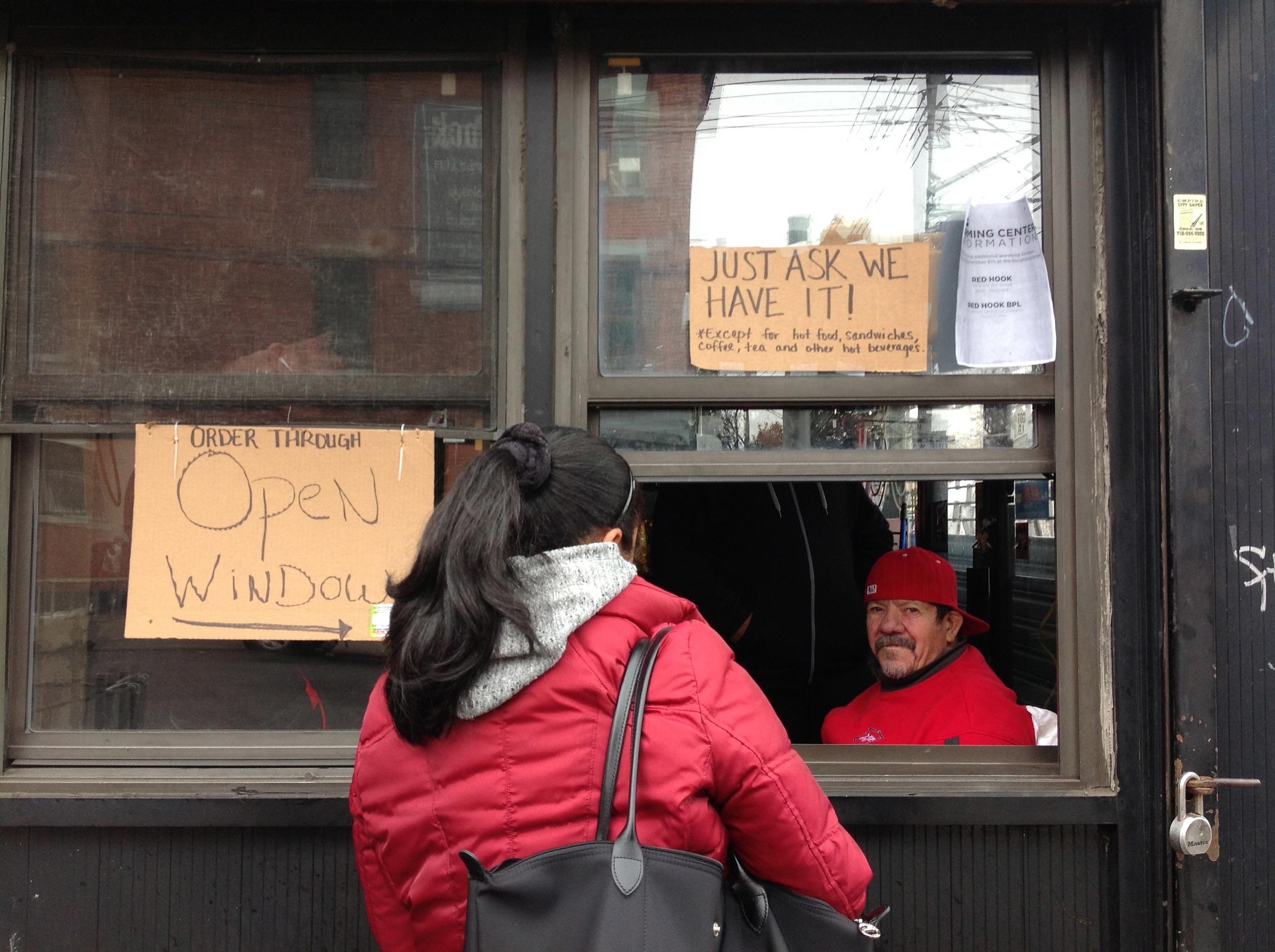
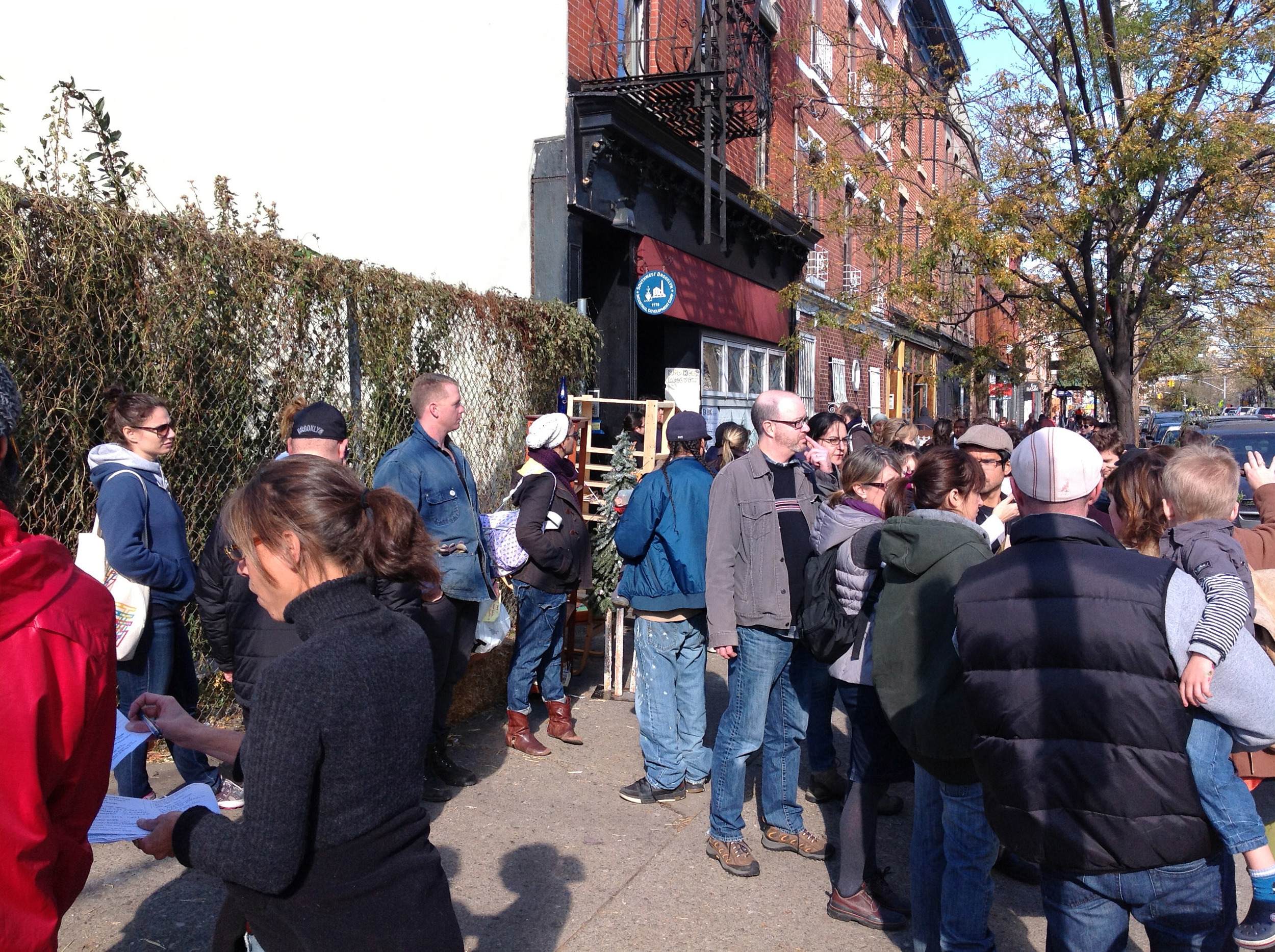
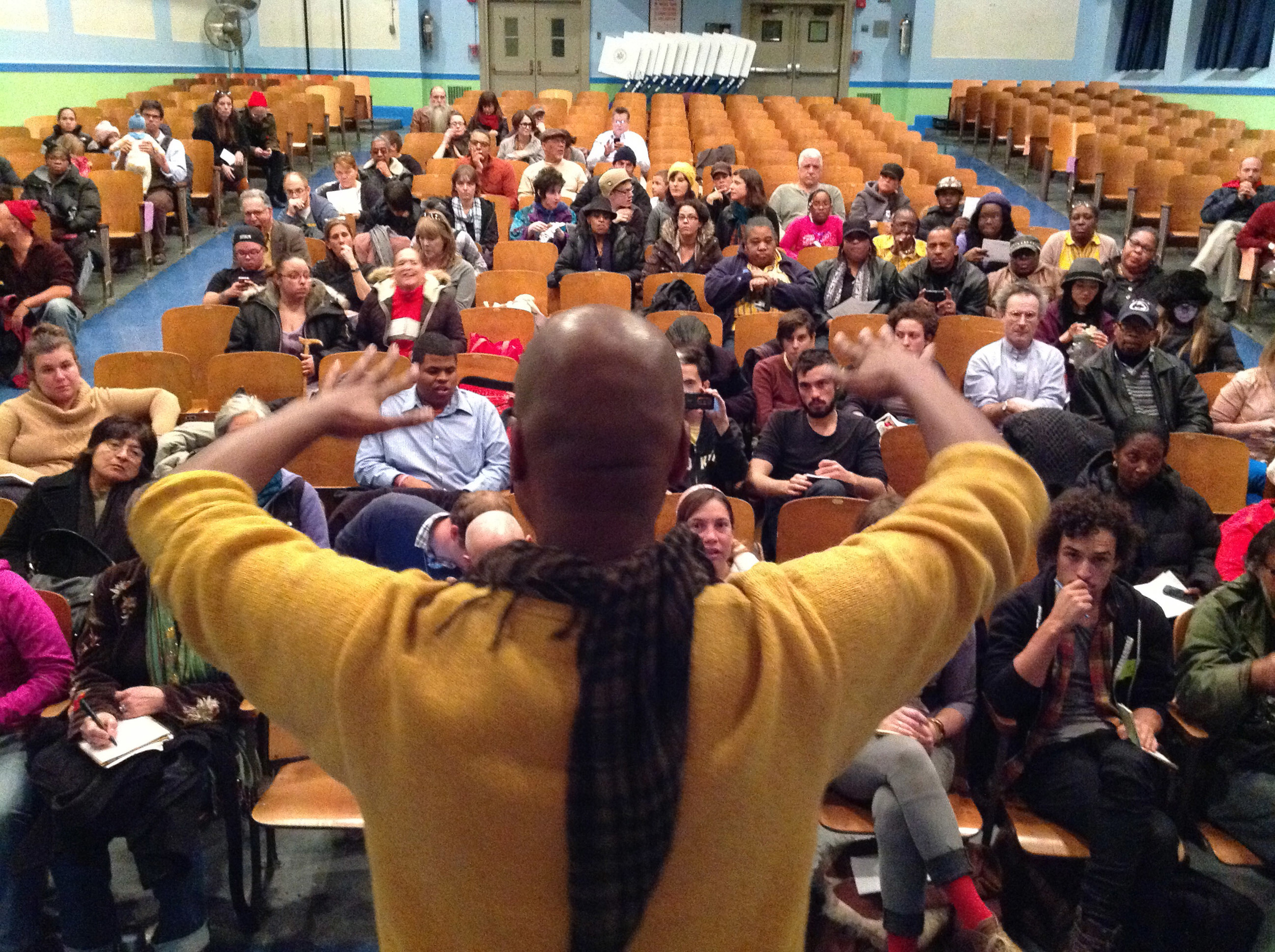
Statement by Danny Schneider, Principal, Schneider Electrical Contracting
“Hurricane Sandy threw Red Hook into a tail spin. Residents rose to the occasion and with tenacity and synergy, and strengthened their character.”
Statement by Adam Armstrong, Pioneer Street Homeowner, blogger “A View from the Hook”
In the chaotic aftermath of Super Storm Sandy, PortSide New York provided a vital and invaluable resource for the residents of Red Hook. After riding out the storm and saving their own ship, the MARY WHALEN, PortSide came ashore, quickly set up shop at 351 Van Brunt Street and proceeded to make a base - a visible and accessible storefront - from where they could reach out, provide information, resources and assistance to their land lubbing neighbors, most of us who were desperately trying to recover from the immense damage that had been done to our homes and our unique, waterfront neighborhood.
PortSide and their team of volunteers co-ordinated tradesmen to go and physically assist our residents, and they gathered and disseminated information about anything they though would be helpful - FEMA, legal assistance, insurance matters, Con Edison, National Grid, the Rapid Repairs program, etc., and provided a connection to our representatives in government. On many of these matters, PortSide organized meetings and reached out to our residents, and in the case of our street - Pioneer Street - she co-ordinated the creation of a comprehensive contact list so that everyone on our block could share information and provide support to each other. It was - and still is - a wonderful way for the residents of Pioneer Street to keep in touch and get updates on our street's recovery, with Carolina Salguero, PortSide’s Director, checking in regularly to see how things are going and, many month's later, still providing advice and information wherever and whenever she can.
Statement by Gallery Brooklyn
“Gallery Brooklyn raised over $1K from the sale of Brooklyn-born artist, Jeremy Hoffeld, whose oil paintings gave comfort to the shell-shocked residents of Red hook. The funds will be donated to the Red Hook Initiative, a non-profit organization that provides enrichment geared toward the arts for children of the Red Hook community."
About PortSide NewYork
PortSide NewYork is honored to have won a White House "Champions of Change" award for our work during and after hurricane Sandy. We hope the award will allow us to continue our Sandy-aid work, launch new resilience training programs, and attract more assistance to Red Hook. Things look promising; the phone has started to ring. Until we finish the blogpost about Part II of our Sandy story, we've added photos to a press release below to tell that story. Part I of the story, how we protected the MARY A. WHALEN from Sandy, can be read here.
PortSide NewYork educates people about the BlueSpace, the water part of the waterfront. PortSide works with the community ashore and the community afloat; our goal is to bring the two closer together, to foster their mutual understanding and to create synergies between the two. PortSide programs are diverse—they include maritime preservation, visiting vessels, arts and educational programs, community service and advocacy. What unites them is the focus on water and waterfront issues. Our mission is to bring NYC’s BlueSpace to life.
PortSide has its offices aboard a historic ship, the MARY A. WHALEN, and with her, PortSide has created the world's only oil tanker cultural center, a ship in the National Register of Historic Places. PortSide runs many programs on the MARY, and we run many off the ship as well.
PortSide NewYork is negotiating with GBX▪Gowanus Bay Terminal for a homeport in Red Hook, Brooklyn! At our prospective home, the tanker MARY A. WHALEN will be publicly accessible directly from Columbia Street across from IKEA. [Note: MARY A. WHALEN relocated to Atlantic Basin May 2015]
PortSide’s electricity on the ship was repaired after 35 nights of reliance on flashlights and one 15-amp extension cord. PortSide seeks professional conservator help with two waterlogged books from the 1850s (stored in a freezer since the flood) and restoration of the antique replacement parts for the ship’s engine which were stored in the shed.
More info
Official description of the White House Champions of Change Sandy awards
"Across the areas impacted by Hurricane Sandy, ordinary Americans are doing extraordinary, innovative things in their communities to respond to and recover from this disaster. By partnering with the whole community, we, as a nation, are better positioned to meet the unique needs of communities and neighborhoods across America."
PortSide NewYork, and the other 16 winners, were at a White House award ceremony on April 24 for a panel discussion and remarks by the head of FEMA Craig Fugate and the head of HUD Shaun Donovan. Carolina Salguero, Director of PortSide NewYork represented PortSide on the panel. A video of her remarks is here.
FEMA handled the Sandy nomination process. The head of FEMA Craig Fugate spoke at the White House Champions ceremony and explained that the awards were important for underlining how the public was now being viewed by FEMA as survivors (not victims) and partners in recovery (not just recipients of aid).
Thanks to Craig Hammerman, District Manager of Brooklyn Community Board 6 for nominating us. You can read his nomination here.
For PortSide's latest Sandy relief information, see our regularly updated blogpost and follow us on Twitter




